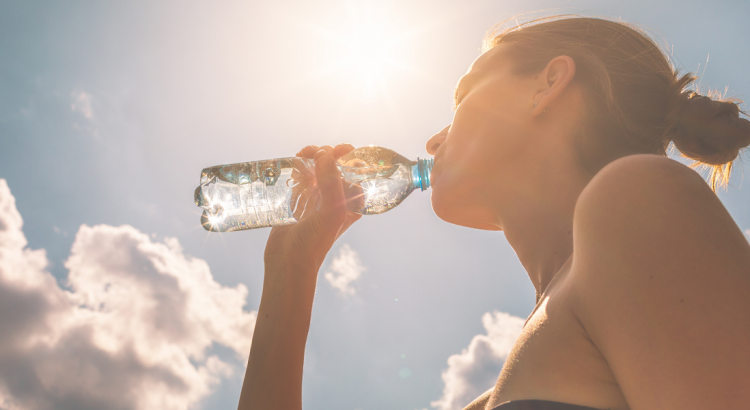Looking back on the holidays, adding family meals, present shopping, and events to your busy schedule may have been overwhelming. Adding those tasks on top of your regular to-do list were fun but daunting. Maybe in the new year, you are focusing on being less stressed while still being productive. Recently, Sarah Pratt, an Extension Agent with the Virginia Cooperative Extension Office discussed her tips for Tackling Your to-do List to Mitigate Stress as part of the Balancing Life Webinar series.
Before getting into the individual steps, she says it is important to first acknowledge that everyone is in a different place and space in life. We are all busy with different responsibilities and what overwhelms each of us is not going to look the same for everyone. Try not to compare your task list or your responsibilities to someone else. That will only add more stress. Also, she notes that her tips are geared toward managing the to-do list and alleviating the stress that you already have. This is not a how-to guide on being more productive but rather how to manage your tasks at hand.
Step 1: Brain Dump
Take a few minutes and write down every task that comes to mind. These are not long-term goals or events in a few months but rather things that need to be completed or worked on in the next week or so.
Step 2: What is Good Enough?
Look at your list and see which items can be checked off even if they are not done perfectly. We tend to strive for perfection which can lead to being overwhelmed. Take a look at tasks that just need to get done.
For example, if grocery shopping is on your to-do list: you need to do it and not eat out every night, but you can’t do it until you make your meal plan for the week. Once you make the meal plan then you must do a pantry inventory to see what you need to buy. Now you have added 2 more tasks to your list. Instead, go to the store and buy the staples. Buy food you enjoy that can be frozen and/or stored if you already have it. Don’t overcomplicate it. If the laundry is on your to-do list, is it enough to just have clean and sorted clothes? Do you need to fold and put away every single item?
Conversely, make sure items that need to be done perfectly get the quality attention that they deserve. If you are sending out holiday photos and want good quality photos, don’t rush and take them yourself. Plan them out and hire a professional.
Step 3: What Is Your Timeline?
Do any of your tasks have specific deadlines? Write those out so you know exactly when they are due. Do any of the tasks take less than five minutes? Put a star or an arrow by those tasks so you know if you need that endorphin rush of feeling like you’ve completed something, you have those tasks to check off easily.
Step 4: Would You expect The Same From a Loved One?
Take a look at your list and how many items are on versus the time you have to complete it. Is it reasonable? If someone you care about had this same to-do list and time constraints, how would you feel? If you think it is too much for them, consider cutting yourself some slack too and see what items can wait a little bit longer.
Once you have finished your to-do list, some people may feel guilty like there is something else they should be doing. If you are that kind of person, try adding self-care tasks to the list or some form of reward. Allow yourself to take a nap or watch a movie. Maybe share your accomplishments with friends or colleagues as a way to pat yourself on the back. Be proud that you completed the list, but more importantly, do not guilt yourself if you do not finish it. Try again tomorrow.
Sarah goes on to discuss how we can get so consumed in the day-to-day and perfection that we allow ourselves to get overwhelmed. We forget about long-term goals and things that bring us joy. She relates this to habits versus motivation. Our brains are resistant to change; we are creatures of habit. However, motivation can be fleeting so we create habits to make up for the times we lack motivation. Creating simple, reasonable to-lists daily can help us create new habits. For the long-term goals, Sarah recommends adding the simplest task to your daily list that will help you achieve your objective. It is important to pick a long-term goal that is solely for yourself, too. This can be in addition to goals for your family, career, etc., but pick something specifically and personally for you. Then, pick a small enough task related to that goal, that can be completed every single day. For example, if your goal is to run a marathon, maybe your daily task is to put on your tennis shoes every single day. Most days, once you have your shoes on, you will probably want to go for a walk or a little jog. Some days you may put your shoes on and sit back down on the couch (which is ok). You are repeating a daily task to instill a new habit. You will often do more than the minimum but getting started is half the battle.
The Virginia Cooperative Extension Office hosts weekly webinars in the Balancing Life series. If you want to learn more or view the whole webinar recording visit their website.
Balancing Life: Tackling Your To-Do Lists to Mitigate Stress: Sarah Pratt shared some basic ideas that have fundamentally changed the way I deal with my tasking! Not only do we make the lists, but we prioritize it, see what takes 5 minutes or less and…..drum roll please….. determine what has to be done “excellently” and what can be done “good enough!” From one who can be a bit “perfectionistic” at times, this is mind-blowing and freeing at the same time. Check out the tips on the recording, in the slide deck, and those shared by other in the chat!
Recording: https://video.vt.edu/media/Balancing+LifeA+Tackling+Your+To-Do+List+to+Mitigate+Stress+10.15.2021/1_pogud6bo
Slides: https://drive.google.com/file/d/1gr-RtjNVIsqW4fbA39OTg7x6El_otylY/view?usp=sharing
Chat: https://drive.google.com/drive/u/0/folders/1spiT1PTwql7_4MLlJG8m4BxYwBJzHg23
Read More
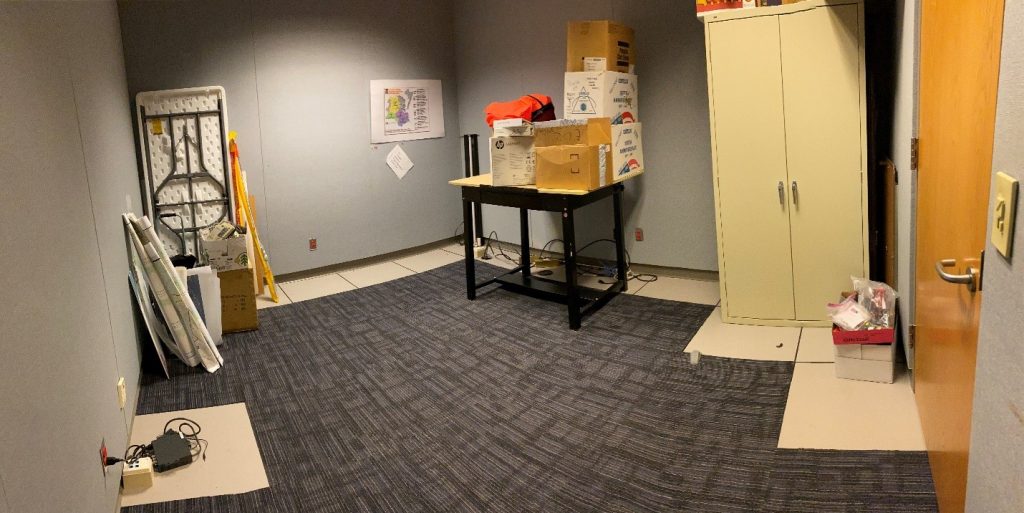
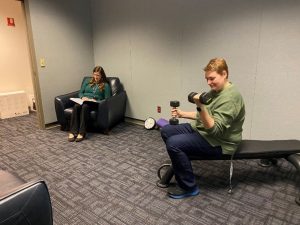
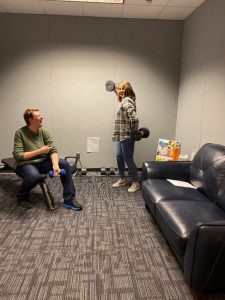

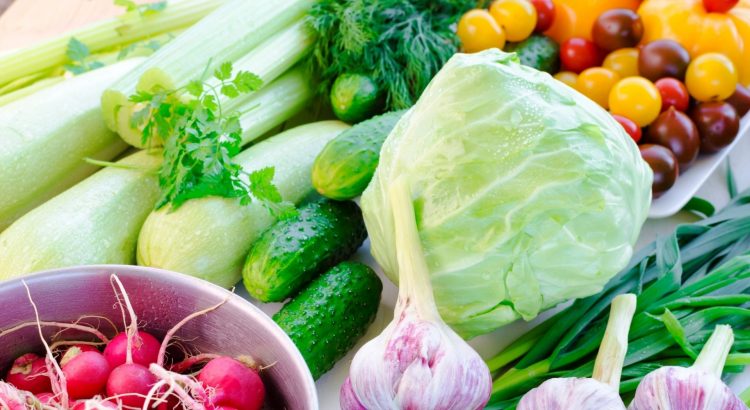


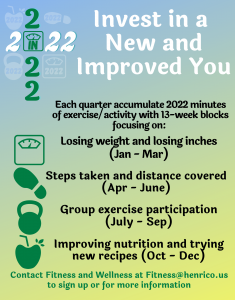 The New Year is upon us and perhaps you are already thinking about a New Year Resolution or two to master in 2022. Before deciding on your plans, we invite you to join the Fitness & Wellness Division in tackling exercise/physical activity consistency with our year-long quest of achieving 2022 minutes of exercise/physical activity each quarter in 2022.
The New Year is upon us and perhaps you are already thinking about a New Year Resolution or two to master in 2022. Before deciding on your plans, we invite you to join the Fitness & Wellness Division in tackling exercise/physical activity consistency with our year-long quest of achieving 2022 minutes of exercise/physical activity each quarter in 2022.



 “I joined the health coaching series because I had completely lost all my healthy habits over the last year. While my main goal was to lose weight, I really needed to re-learn healthier habits. I knew I needed a higher level of accountability if I was going to get back on track.” Recalls Ty Parr, one of the group participants.
“I joined the health coaching series because I had completely lost all my healthy habits over the last year. While my main goal was to lose weight, I really needed to re-learn healthier habits. I knew I needed a higher level of accountability if I was going to get back on track.” Recalls Ty Parr, one of the group participants.
